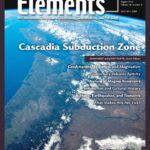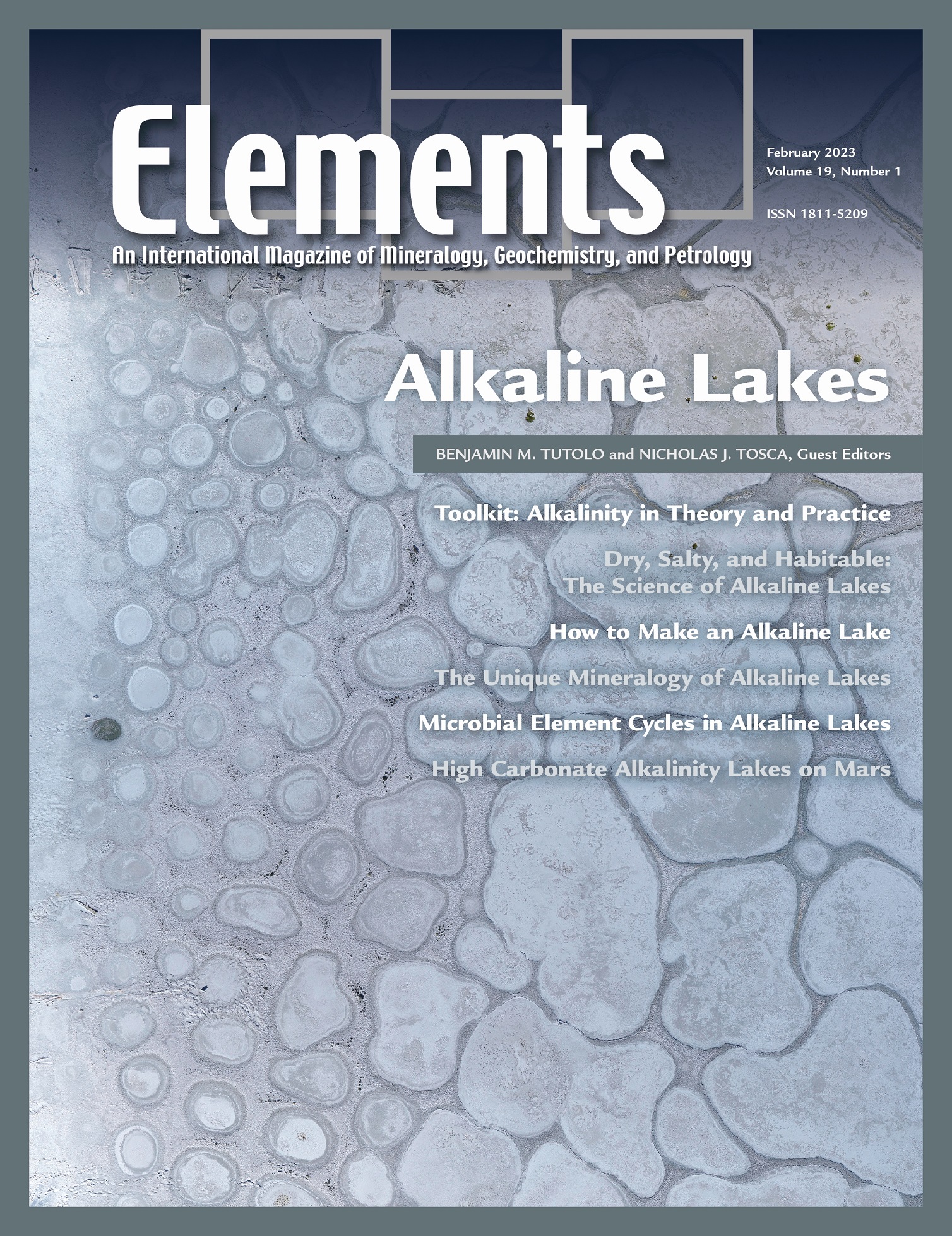
Cascadia Subduction Zone, August 2022, Vol. 18, No. 4
June 28, 2024
Biomagnetism, August 2023, Vol. 19, No. 4
June 28, 2024Alkaline Lakes, February 2023, Vol. 19, No. 1
$20.00
Alkaline lakes are incredibly dynamic, unique, and fascinating biogeochemical environments. This thematic issue leverages the authors’ multidisciplinary insights to portray alkaline lakes’ biogeochemical, mineralogical, and geological importance for both science and society.
Alkaline Lakes
February 2023, Vol. 19, No. 1
Alkaline lakes are incredibly dynamic, unique, and fascinating biogeochemical environments. This thematic issue leverages the authors’ multidisciplinary insights to portray alkaline lakes’ biogeochemical, mineralogical, and geological importance for both science and society. The articles individually explore the unique conditions leading to the formation of alkaline lakes, the distinctively productive microbial ecosystems that inhabit them, their distinguishing chemistry and mineralogy, their role as societally important economic resources, and their potential to have originated life on Earth as well as Mars. This approachable overview of the geochemical, biological, and societal aspects of alkaline lakes establishes their vital importance to the broad readership of Elements and stimulates continued explorations of these mesmerizing geological systems.
Why You’ll Love Elements Magazine:
- Expert Contributors: Articles written by renowned researchers in the field of geoscience.
- Engaging Content: Join a community of readers who are passionate about Elements.
- Exceptional Quality: Each issue is printed on high-quality paper with stunning visuals and detailed illustrations that bring complex scientific concepts to life.
Order your copy of the February 2023 issue of Elements magazine today and explore alkaline lakes.
Related products
-
Fluids in Planetary Systems, January 2005, Vol. 1, No. 1
$20.00Water and other geofluids play an important role in the geochemical and rheological evolution of the Earth and other bodies in the solar system. These fluids are responsible for the formation of hydrothermal mineral deposits, affect eruption behavior in volcanic systems and the geophysical properties of the mantle, and significantly affect the way in which rocks deform and fracture.
-
The Nuclear Fuel Cycle – Environmental Aspects, December 2006, Vol. 2, No. 6
$20.00Increasing concerns for the effects of global warming that result from rising greenhouse gas concentrations in the atmosphere have led to a reexamination, even enthusiasm, for nuclear power. Of all the current alternatives to fossil fuels, nuclear fission is the most important source of energy, accounting for 17 percent of the world’s electricity.
-
Frontiers In Textural And Microgeochemical Analysis, August 2007, Vol. 3, No. 4
$20.00Recent advances have been made in high-resolution in situ methods to image mineral growth patterns, analyse compositional and isotopic zonation, and improve our ability to visualize, study, and model rock textures in three dimensions. These advances provide a significant step forward in the understanding of how rocks form and the history they can tell us.




